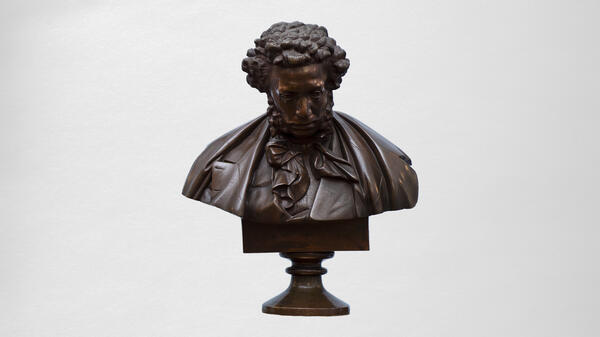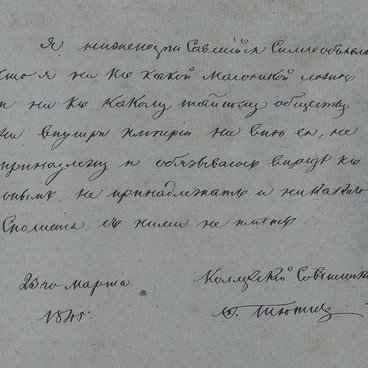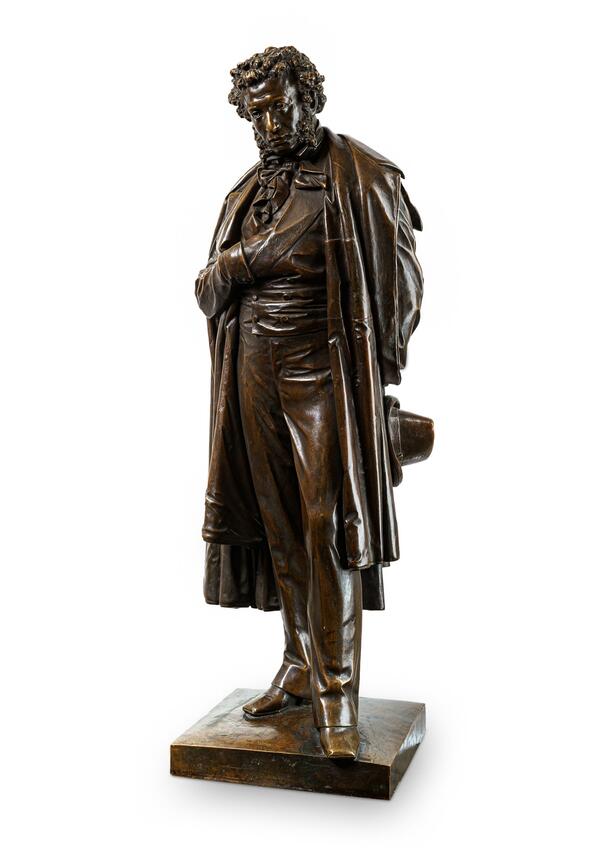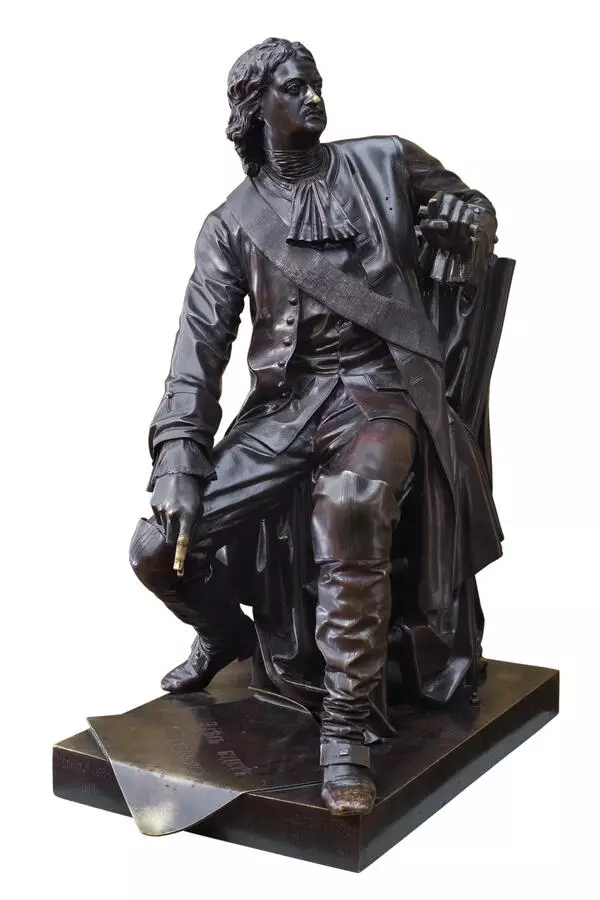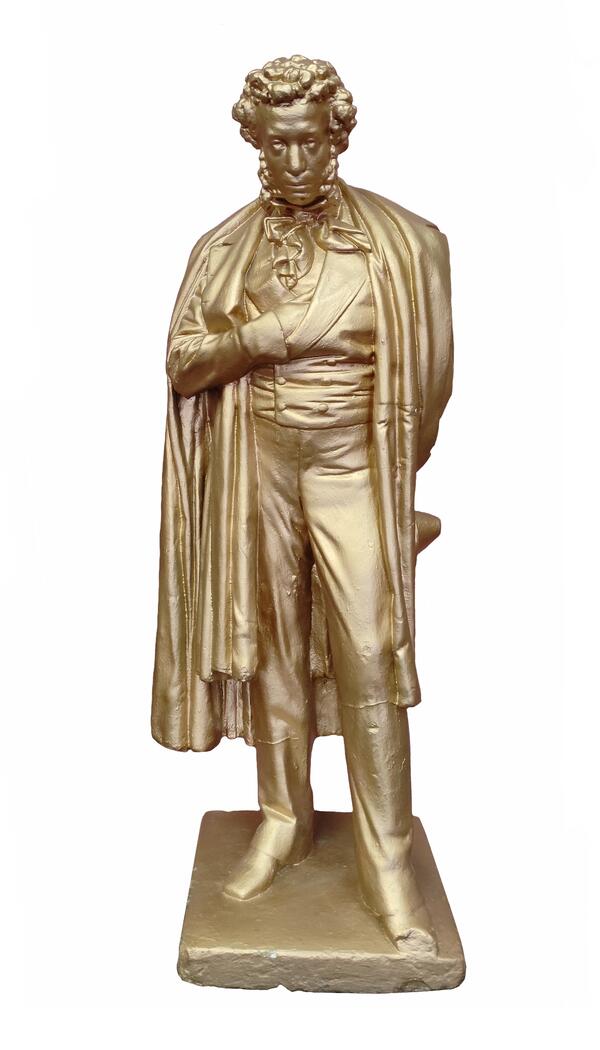The portrait sculpture of the poet Alexander Pushkin from the museum collection is made of bronze. It was created in a realistic manner by Alexander Opekushin (1838–1923), a Russian sculptor, who was born into the family of a serf peasant. Thanks to his extraordinary abilities, Opekushin managed to gain freedom and graduate from the Imperial Academy of Arts.
In 1873, there was a competition to design a monument to Pushkin. Almost all Russian sculptors of that time took part in it. While creating the models of the monument, Opekushin made a huge number of images of the poet in various poses. As a result, the first monument to the poet in Russia was ceremonially opened in Moscow on June 6, 1880. Today it is on Pushkin Square. This work made Opekushin truly famous. The bust from the museum collection is a copy of a part of the monument to Pushkin in Moscow.
Alexander Pushkin was a very important figure for Fyodor Tyutchev. ‘Tyutchev undoubtedly belonged to the so-called Pushkin’s galaxy of poets, ” the publicist Ivan Aksakov wrote. ‘Not only because he was almost the same age as all of them, but especially because his poems have the same historic characteristics that distinguish and define the poetry of this age.’
In 1836, Tyutchev put Pushkin ‘high above all modern French poets.’ Tyutchev clearly perceived Pushkin’s major role in Russian culture. He already knew this ten years before his own poetry began to flourish and the first works were published. Nikolai Gogol referred to Tyutchev as one of the poets who had been “inspired by Pushkin to work.”
It was Pushkin who published the first 24 poems by Fyodor Tyutchev in his “Sovremennik” journal in 1836, calling them simply “poems sent from Germany” with the modest signature “F.T.” Pushkin highly appreciated the work of an unknown author. He considered him a representative of modern Russian poetry, which “remained alien to the influence of the French, it becomes better and better friends with German poetry and proudly retains its independence from the tastes and demands of the public.”
In 1873, there was a competition to design a monument to Pushkin. Almost all Russian sculptors of that time took part in it. While creating the models of the monument, Opekushin made a huge number of images of the poet in various poses. As a result, the first monument to the poet in Russia was ceremonially opened in Moscow on June 6, 1880. Today it is on Pushkin Square. This work made Opekushin truly famous. The bust from the museum collection is a copy of a part of the monument to Pushkin in Moscow.
Alexander Pushkin was a very important figure for Fyodor Tyutchev. ‘Tyutchev undoubtedly belonged to the so-called Pushkin’s galaxy of poets, ” the publicist Ivan Aksakov wrote. ‘Not only because he was almost the same age as all of them, but especially because his poems have the same historic characteristics that distinguish and define the poetry of this age.’
In 1836, Tyutchev put Pushkin ‘high above all modern French poets.’ Tyutchev clearly perceived Pushkin’s major role in Russian culture. He already knew this ten years before his own poetry began to flourish and the first works were published. Nikolai Gogol referred to Tyutchev as one of the poets who had been “inspired by Pushkin to work.”
It was Pushkin who published the first 24 poems by Fyodor Tyutchev in his “Sovremennik” journal in 1836, calling them simply “poems sent from Germany” with the modest signature “F.T.” Pushkin highly appreciated the work of an unknown author. He considered him a representative of modern Russian poetry, which “remained alien to the influence of the French, it becomes better and better friends with German poetry and proudly retains its independence from the tastes and demands of the public.”

